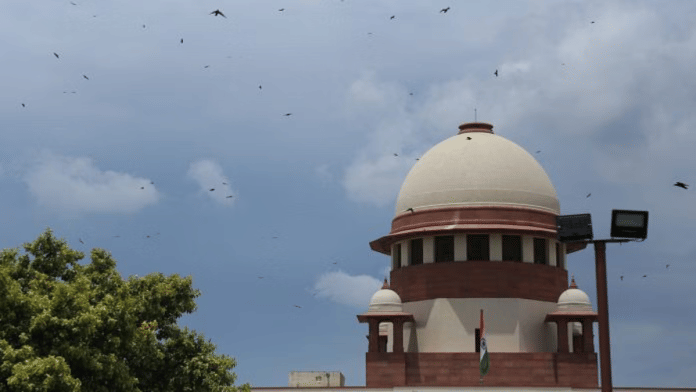New Delhi: The Centre has defended its policy of gendered vacancies in the Army’s Judge Advocate General (JAG) department, stating that since personnel posted to this wing may be assigned combat roles during times of war, recruitment of male and female officers is carried out based on functional and operational requirements.
This, it claimed, is necessary to maintain the Army’s operational readiness. As a result, the JAG branch cannot be treated as a separate entity requiring a distinct procedure, such as a unified merit list, it argued.
The JAG is one of the few branches in the Army where women officers can be absorbed permanently after completing their Short Service Commission (SSC).
The Centre presented its stance before the Supreme Court while opposing petitions filed by two women who had challenged a January 2023 notification.
The notification reserved six vacancies in the JAG for men while restricting three to women. Arguing that this disproportionate reverse reservation in favour of men was discriminatory, the petitioners claimed it denied them a fair opportunity for selection.
According to the petitioners, they had secured the fourth and fifth positions in the merit list, ranking higher than their male counterparts. However, due to fewer vacancies allotted to women, they were not selected, while the male candidates were appointed.
The Centre also pointed out that, unlike their male counterparts, women officers, upon grant of commission, are not attached to infantry battalions or combat support units for regimental duties. In contrast, male officers are first posted on an 18-month attachment with Infantry units before being deployed with the JAG.
In their petitions, the women had contended that officers posted in the JAG department function as legal advisors and are non-combat personnel, thus making gender-based recruitment unjustifiable.
The government, however, termed this view an “apparent misconception.”
It told the top court Friday that the Army comprises various combat arms, combat support arms, and services—all of which are combatant forces—and has no non-combatant uniformed element.
Referring to international law, the government noted that under the Geneva Convention, protection during armed conflict is extended only to medical personnel and chaplains (religious teachers), not legal officers. Therefore, it argued, assessing JAG officers’ employability based solely on peacetime duties would be factually incorrect.
It further maintained that, since the Army does not deploy women officers in frontline combat positions where contact with the enemy is likely, gendered vacancies become a military necessity. The duties of officers during wartime can vary significantly, and thus, unlike ordinary civil services, gender parity cannot override operational demands.
The Supreme Court bench, comprising Justices Dipankar Dutta and Manmohan, appeared unconvinced by the Centre’s justification.
During the hearing, the judges questioned why the Army could not extend combat roles to women officers, especially when the Indian Air Force had permitted a woman pilot to fly a Rafale aircraft—thereby facing similar risks, including the possibility of being taken as a prisoner of war.
Additional Solicitor General Aishwarya Bhatti, representing the Centre, denied any discrimination in the JAG’s recruitment process. She clarified that two separate but identical Services Selection Boards (SSBs) were conducted to select suitable male and female candidates.
She also submitted that the induction and employment of women officers in the Army, including in the JAG, has evolved progressively, keeping in mind operational preparedness. The male-to-female recruitment ratio, which was 70:30 in 2012, has now improved to 50:50. Hence, the Centre argued, it would be inaccurate to claim that the JAG recruitment policy is either discriminatory or unconstitutional. To suggest otherwise, the Centre said, would amount to encroachment upon the domain of the Executive, which is solely authorised to determine the intake of male and female officers in the Indian Army.
While reserving its judgment on the legality of gendered vacancies, the bench directed the Union government and the Army to induct the petitioner with rank 4 in the next available training course for JAG officers. The second petitioner, it was informed, had joined the Indian Navy while the matter was pending.
The court asked her to clarify whether she still wished to join the Army’s JAG department.
The Centre further submitted that there exists a “persistent shortage” of officers in the regular Army, especially within the “cutting-edge infantry”. In emergencies, personnel from other departments, including JAG, are mobilised to address this shortfall.
“In the Indian Army, the key spirit is that gender integration should be an evolving process guided by operational needs rather than gender itself,” the Centre told the court. “This implies that while aspirations of women should be accommodated, they must primarily align with the structural and functional necessities of the organisation. The allotment of vacancies is thus not based on any gender distinction but on the operationally necessitated balance of the Indian Army.”
(Edited by Radifah Kabir)
Also Read: Justice Gavai to continue interviews for high court judgeship, push for diversity with merit as CJI






